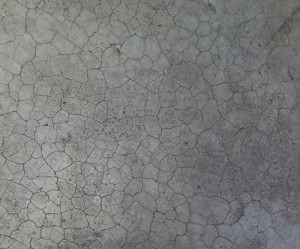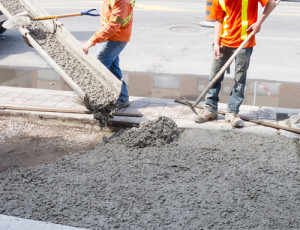
Cracks are very common in almost any form of concrete or asphalt surface. Whether the cracking is immediate or occurs years after it was poured, it’s inevitable. There are many different reasons why concrete cracks. Read on to learn more about the different types of concrete cracks and what you can do to prevent them.
There are two types of cracks;
active and dormant. Active cracks are cracks that expand, lengthen or deepen over time. Dormant cracks do not change unless they’re affected by moisture or impact. If you find a crack in your concrete, it’s important to have it sealed right away before it gets any worse.
If you’re in need of concrete repair, call AC Paving at (410) 923-6100 or Click Here for a FREE Quote!
Plastic Shrinkage Cracks
The earliest crack that will form is because of a process known as plastic shrinkage. Plastic shrinkage can occur if the mixture of water and cement is too watery. Too much water will take up space, causing the solid ingredients of the mix to separate. When the water evaporates, the spaces in the mix remain, leaving cracks sometimes only a hair thin.

Heaving Cracks
Heaving refers to concrete that is raised by either movement underneath or by excessive freeze and thaw cycles. Sidewalks or any type of pavement that lies over a tree root can result in cracks caused by heaving.
Settling Cracks
Cracks caused by settling poses the opposite issue of heaving. If a tree is removed and roots underneath begin to decompose, the concrete may crack because of settling. Other common reasons concrete may crack due to settling is from underground wiring or plumbing. Even minor movements underneath concrete can cause cracking over time.
Pressure Cracks
Pressure cracks are the result of placing too much weight on top of a slab. Excessive weight can put too much stress on the slab or even alter the ground underneath the slab which can cause cracking.

Crazing Cracks
Crazing cracks are very small surface cracks that resemble spider webs caused by premature drying of the slab. If the slab doesn’t have enough moisture or loses moisture too quickly, crazing cracks are likely to form. Since these cracks are minor and only visible on the surface, they don’t pose a threat for repair.
Crusting Cracks
Crusting cracks are often the cause of the stamping process where the slab is pressed to resemble shapes or a pattern. On days where temperatures are high, the top of the slab will dry faster than the bottom. When the stamp is removed, small cracks form around the edges of each stamp. Since crusting cracks are only present on the surface of the slab, they don’t pose a structural problem and can be patched.

Avoiding Cracking
Cracking is very common among slabs of concrete and can’t always be avoided; however there are steps to take that reduce the chances of cracking. Adding the correct amount of water to the mix is crucial to preventing cracks from forming. If the mix has too much or too little water, the chance of cracking increases dramatically.
Understanding where you’re laying a slab is important as any movement underneath the slab can cause cracking. Movement and pressure on the top of a slab can equally cause stress and cracking to the concrete. That’s why it’s important to know the PSI (Pounds per square inch) a slab can hold.
Even though concrete is extremely tough and durable, cracks happen and are inevitable. Avoid cracks by understanding what causes them to form so you can prevent them from occurring.
For more information on cracking, contact a professional at AC Paving by calling (410) 923-6100 or Click here for a FREE Quote!

Great post! Understanding why concrete cracks can help to keep it from eventually cracking. Thanks for sharing!
Thanks for reading, Paige!
Great list here. It’s important to understand what can damage concrete so that you can understand how to protect it in the future. Thanks for sharing!
It’s interesting to read about some of the reasons that concrete might crack and how you can help avoid it. It makes sense that the concrete mix makes a big difference, although it’s hard to change that after the fact. I’ll have to have somebody come out to fix the cracks and give me tips on how to care for the cement.